Emily Lakdawalla • Mar 29, 2018
#LPSC2018: Fungi in the lab, hot springs frozen cold, and exploding lakes
Astrobiology is not usually my first choice of topic at a mixed planetary science meeting because I'm a very concrete person and I like studying things that we actually know to exist. But the first astrobiology session at last week's Lunar and Planetary Science Conference featured talks on a huge variety of interesting topics, and was one of my favorite sessions at the meeting.
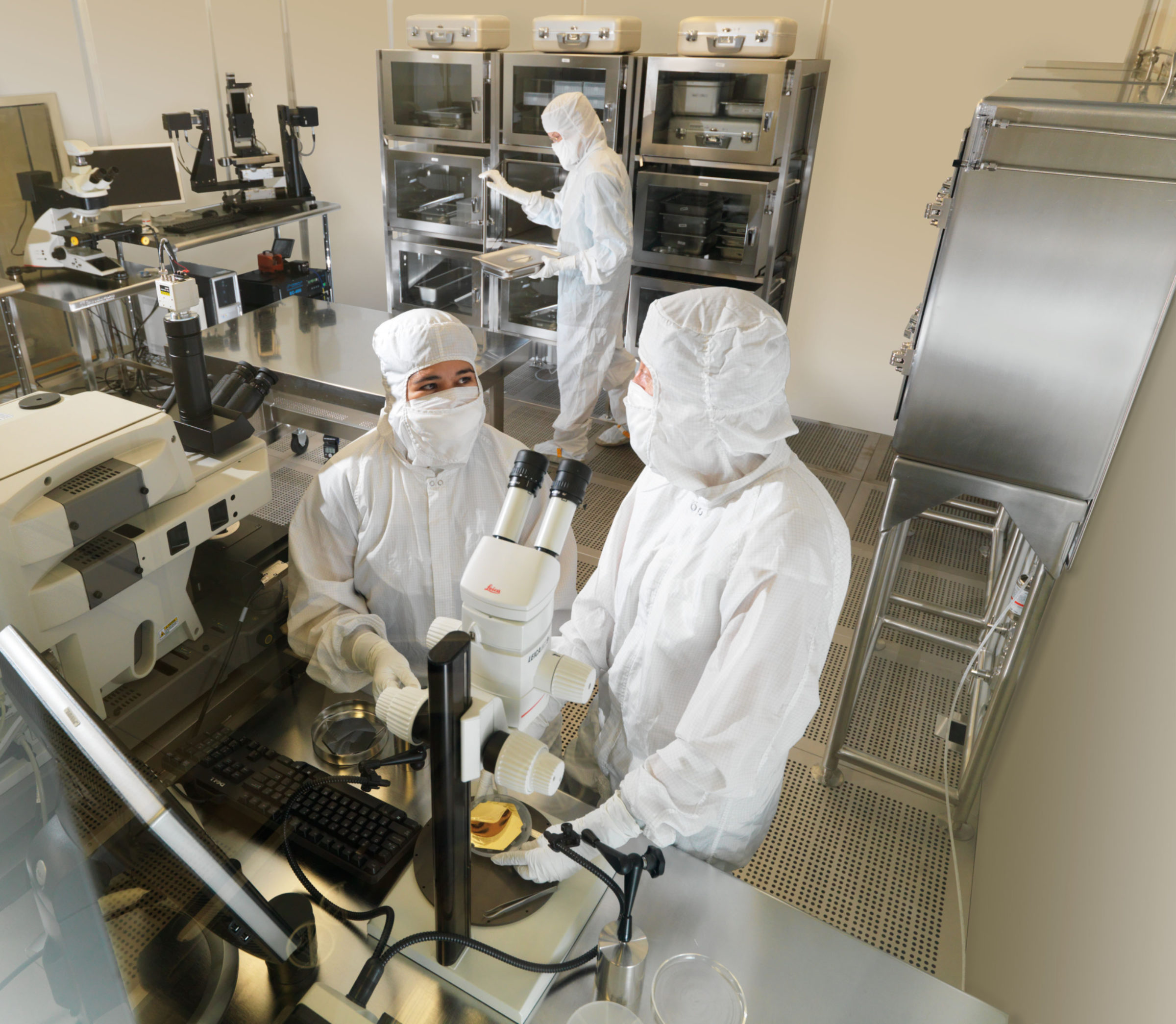
Cross-contamination, aaaaaaaaah!
I'm going to begin with the session's final talk because it's the one that has caused the most controversy. A week ago Adam Mann posted an article at Science provocatively titled "NASA ‘clean’ room is contaminated with fungus". The article is fine but apparently NASA Headquarters was unprepared for the media response to the title and now some of the poor astromaterials curators at Johnson Space Center (JSC) are feeling the heat. Let me reassure you that what Aaron Regberg reported at LPSC is (a) entirely unsurprising and (b) actually part of a responsible and diligent approach to avoiding future problems with the precious samples they will be receiving from asteroids Bennu and Ryugu. This will be longish but I want to set the record straight by paraphrasing Regberg's talk from my notes. [Abstract #2056]
JSC maintains seven extraterrestrial sample collections. From "dirtiest" to "cleanest", as far as I understand it, they are: meteorites collected on Earth; cosmic dust collected at high altitude; microparticle impacts on ISS; lunar samples; and the super-tiny and precious collections from each of Hayabusa, Stardust, and Genesis. Each of these seven collections has its own separate clean lab to avoid cross-contamination.
It may surprise you to find out that JSC is "generally not worried" about microbial contamination above and beyond the usual, stringent clean-room standards. Consider meteorites collected on Earth. These are 100% certain to be contaminated with microbes. At the other end of the spectrum, consider things like solar wind atoms (from Genesis), where microbes would be much larger than the samples and so are "not an issue." But they now have to consider microbial contamination more specifically, Regberg said, because with OSIRIS-REx and Hayabusa2 soon to be bringing back pristine samples from carbon-rich asteroids, and future plans to bring samples back from Mars, we want to maintain sterility of all of those samples.
How clean does a lab have to be? Regberg explained International Standards Organization (ISO) clean room standards. The standard is a measure of how many particles are in a cubic meter of air; it's a little complicated because particles come in different sizes. But the gist is that the lower the ISO number, the cleaner the air, and it's a logarithmic scale: an ISO 5 clean room can have 10 times more particles in its air than an ISO 4 clean room can. (Read more about ISO clean room standards on this industry website.)
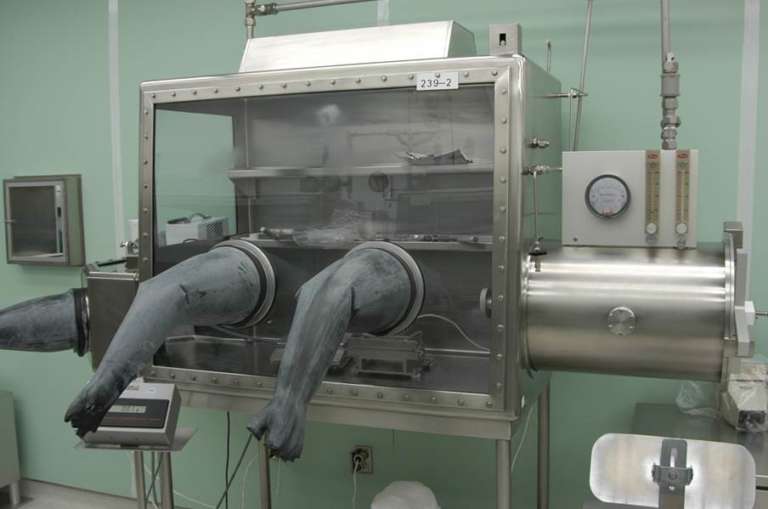
Regberg said that the typical office work environment is at ISO 9. At two orders of magnitude cleaner, ISO 7, is the JSC meteorite lab and also the Jet Propulsion Laboratory's spacecraft assembly facility. The cleanest lab at JSC is the one for Genesis: it is ISO 4. The meteorite lab -- and JPL's high bay -- are allowed to have nearly 4 billion cell-sized particles per cubic meter of air to satisfy the ISO 7 standard. Genesis' lab can have only about 4000 particles per cubic meter.
Obviously things will have to be cleaner for asteroid and Mars samples than they are for meteorites, so those samples will be put in a very clean lab. But JSC wants to take extra special care to minimize the prospect of Earth life contamination of asteroid and Mars samples. To figure out what they will need to be fighting against, Regberg said, JSC began by asking: what is in our dirtiest lab, the one containing Earth meteorites? (Where, I want to emphasize, "dirty" still means "clean enough to build a Mars spacecraft in.") This, he said, represents an endmember for biological cleanliness.
They went into the meteorite lab and used four different kinds of swabbing tools to sample from three different locations: the floor, the table surface, and inside the flow bench (the hood environment where they work directly with samples). They cultured all these samples in four different ways, and then identified what they grew.
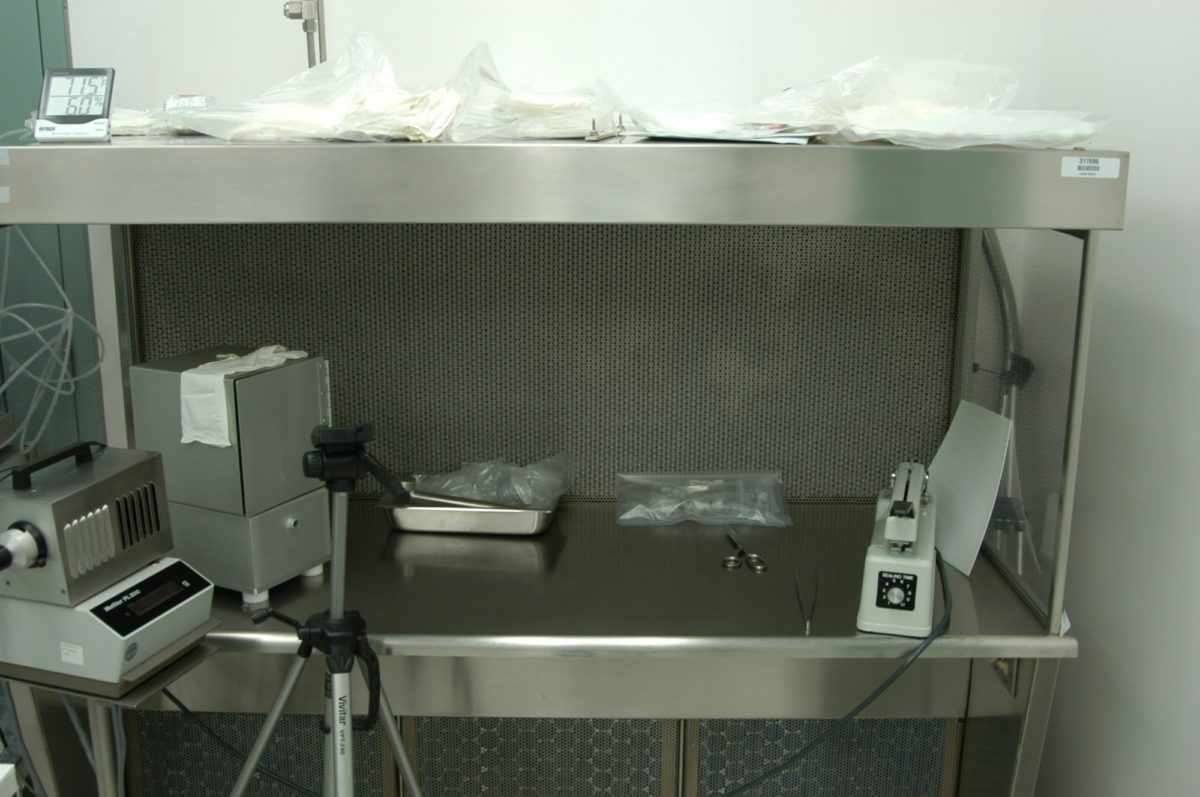
The result: "The meteorite lab is clean but not sterile," which is no surprise. There were microbes in all sampled locations. The floor was, of course, the dirtiest. But even the flow bench had a couple of microbes and two fungal species. The surprising result in all of this were the fungi. Fungi are new for the simple reason that similar studies of spacecraft assembly clean rooms had not looked for fungi. In the first study of the meteorite lab, they found several.
Now, that made them worried. There are certain, rare species of fungi that produce amino acids that people go looking for in meteorites. So they checked. The fungal isolates they obtained from the lab are not, in fact, producing exotic amino acids.
They repeated the experiment and actually found less contamination the second time -- no fungi were detected inside the flow bench at all. This raised more questions: what, actually, is the baseline for contamination? Does it vary seasonally? They don't know yet. More work is needed.
To conclude, Regberg said, "Clean and sterile are not the same thing. Your lab is probably not sterile. Bioburden in the meteorite lab is variable." They are now expanding their work to develop low-bias DNA extraction and sequencing methods on their samples because only about 1% of microorganisms will actually grow in culture -- there are going to be lots of other interesting things yet to find. His talk obviously spurred discussion among the people who work with these samples, and the questions they have for him will guide his further work, refining his approach and making sure they're well prepared.
Anyway, the point of all this is that JSC is doing their jobs, their labs are as clean as they are supposed to be, and they are going to do everything they can to prepare to keep Ryugu, Bennu, and Mars samples as sterile as possible. But this is Earth, and I'll let Regberg's abstract haiku have the last word: "Clean is not sterile / fungi are overlooked / life uh finds a way."
The rest of the session
I'll give shorter summaries of some of the other interesting talks in the session.
Martin van Kranendonk [Abstract #2535] discussed the kinds of environments in which life could originate. Typically we look for habitable environments with energy, a solvent (water), and chemistry -- like deep-sea "black smokers" -- as places where life can thrive. These may be good for life to survive, but before life has started, in prebiotic chemistry, too much water is a problem. All the reactions required to turn simple organic molecules into more complicated ones require dehydration. And the ocean tends to homogenize all the elements, making things pretty dilute. Van Kranendonk proposed an alternative location for the origin of life: hot springs, on land. These have wet/dry cycles; under acidic conditions, they spontaneously form lipid vesicles; and they are able to concentrate organic materials within them. Hot spring deposits are also good at preserving microfossils. His intentionally provocative punch line: "Without drying and exposure, you would not expect life to originate. Sorry, Enceladus or Europa."
Mark Fox-Powell [Abstract #2546] gave a talk about what happens when silica-rich hydrothermal fluids freeze. In hydrothermal environments, the water can contain dissolved silica, which turns into deposits of opal (specifically, opal-A). When these fluids freeze, water freezes out first. The silica is forced into pore spaces between the growing ice grains. The end result is a delicate net-like lattice of opal-A deposits that formed between the ice grains.
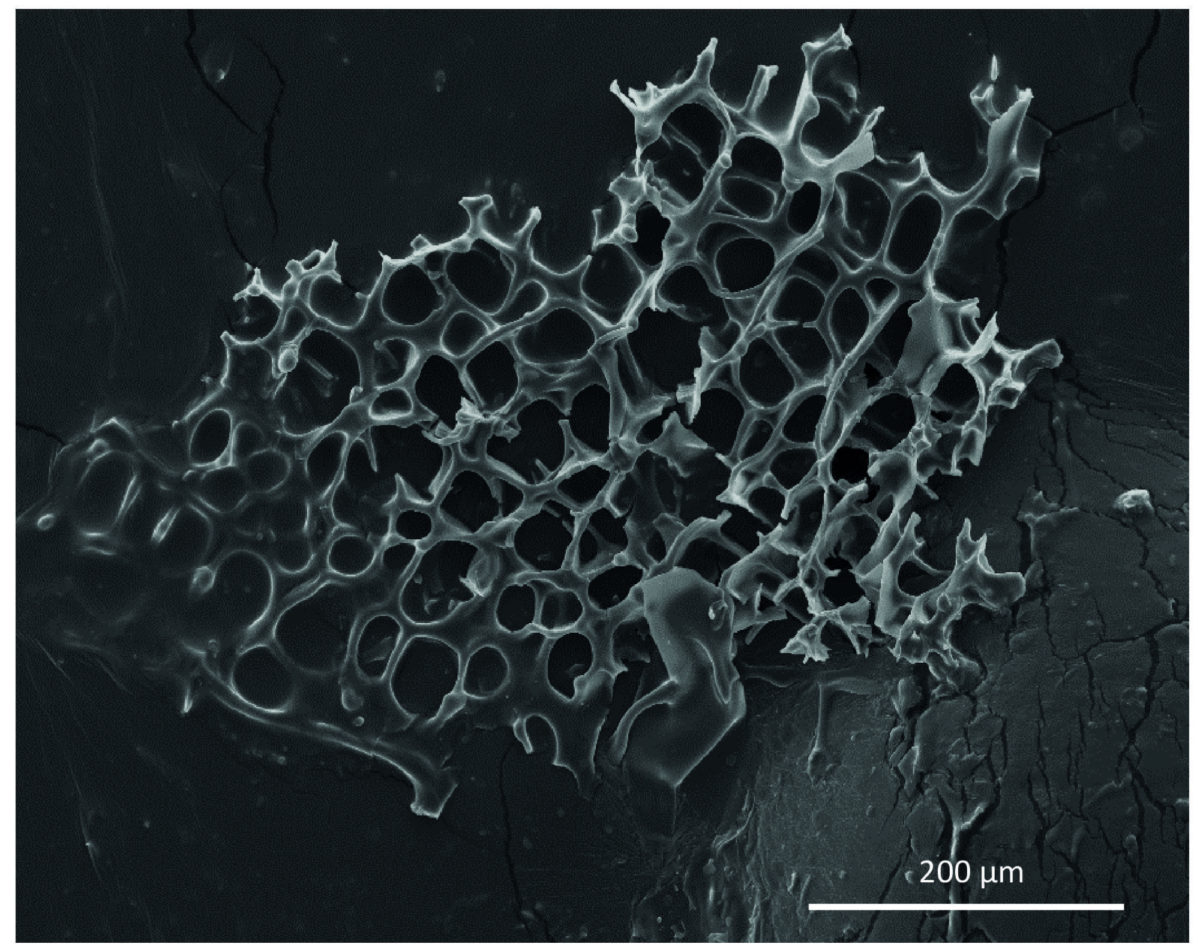
These lattices don't survive because they're too fragile. They break apart into recognizable shapes, though, and Fox-Powell showed beautiful electron micrographs of these grains. Then, he asked: how are organisms mineralized when silica-saturated hydrothermal fluids erupt into freezing environments? He experimented and found that the cryogenic opal-A deposits encased cells, sometimes preserving them, and other times leaving voids that were recognizeable molds of microorganisms. These are candidates for microfossils one might find in hot spring deposits on Mars.
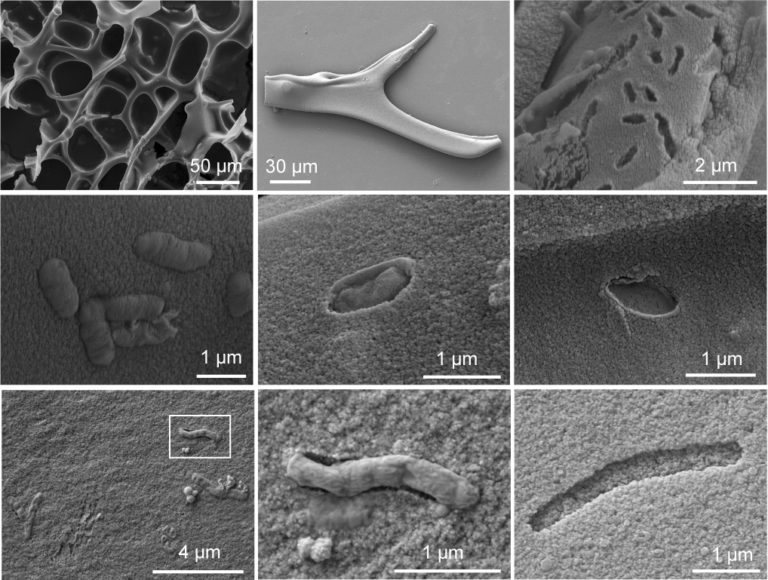
The most memorable talk of the session was Brian Hynek's on a ridiculously hazardous field site, Poás volcano in Costa Rica [Abstract #1608]. The work there is part of an investigation of many basalt-volcanic hydrothermal systems around Earth to look for Mars analogs and to try to understand the kind of bugs that could live in them. "We spent a long time going around the world and breathing lots of sulfur," Hynek said, showing field photos of him and coworkers in gas masks.
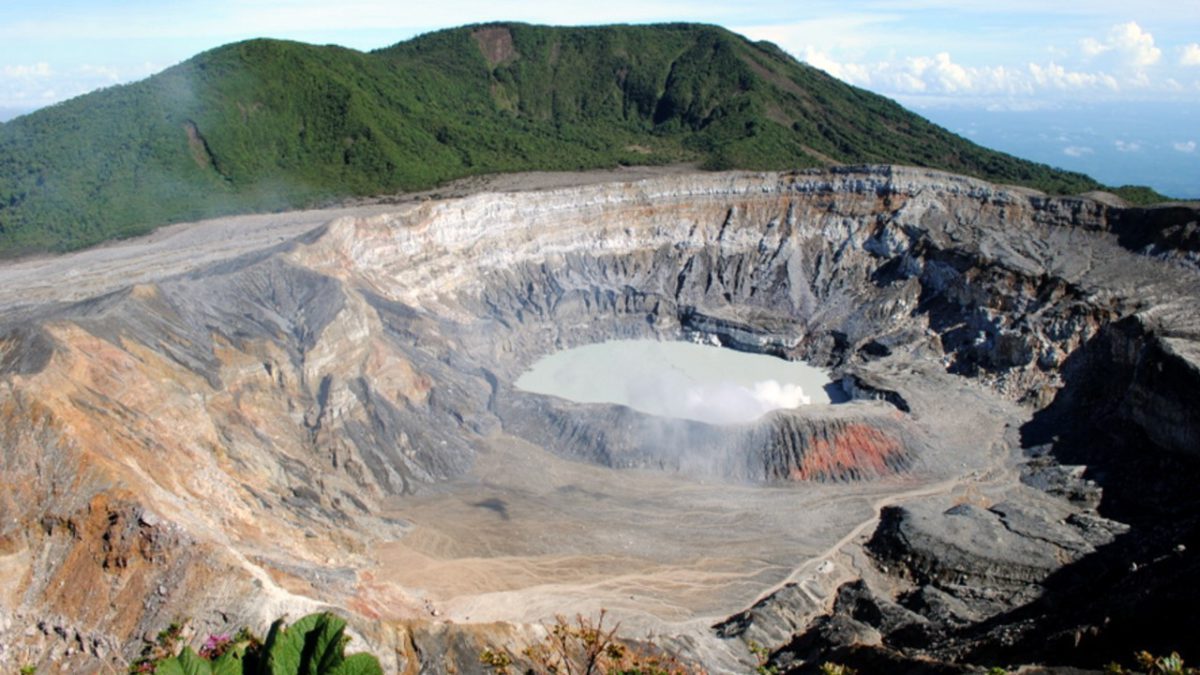
Poás volcano is an active basaltic andesite stratovolcano with a major eruption about once every 50 years. At its peak is a lake, Laguna Caliente. (For those of you who don't speak Spanish, that means "hot lake.") It is an "ultradynamic" volcanic crater lake. How ultradynamic? Its temperature fluctuates from 19 to 96 Celsius; its color changes regularly; its pH varies from -1 to 1.5. "It has frequent phreatomagmatic eruptions, so we try to work really fast." (Phreatomagmatic eruptions happen when water hits magma and is flashed to steam which causes an explosion.)
(Parents, don't send your kids to do fieldwork with Hynek. This is all seriously unsafe.)
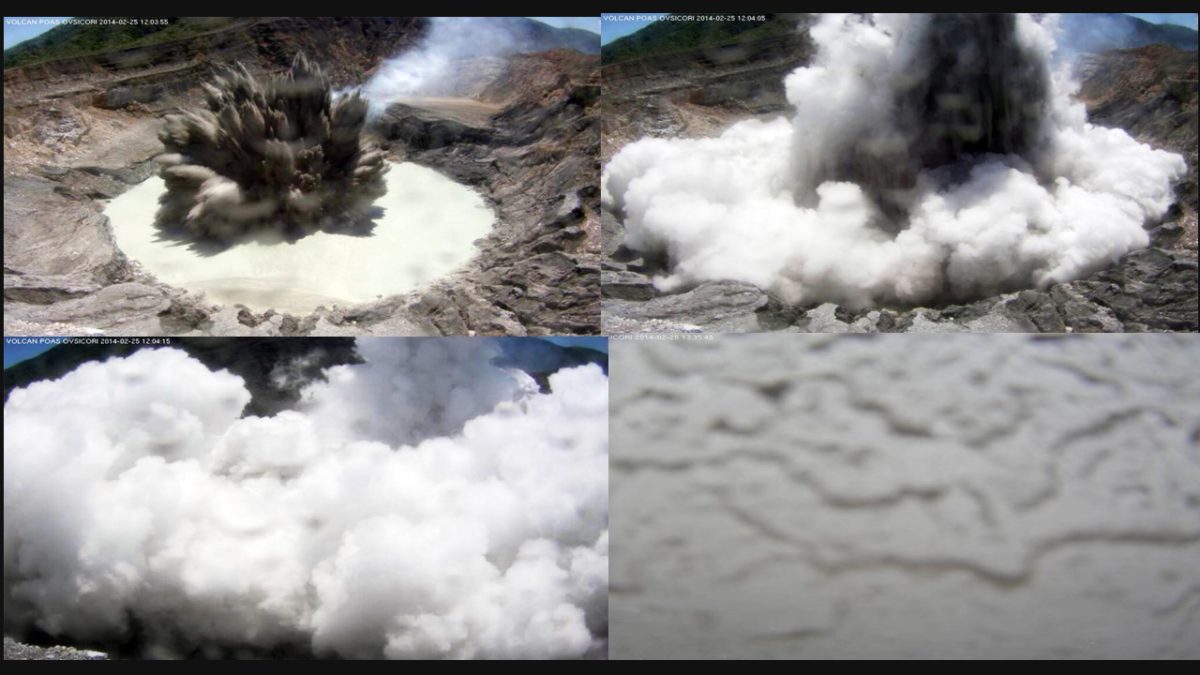
So: is there life in Laguna Caliente? Hynek's procedure: get water samples (fast!), immediately cool them to 0 degrees (presumably in an ice-water bath in a cooler), drive real fast down the mountain, freeze them to very cold in the lab within a few hours of sample acquisition. Do DNA extraction and sequencing. The result: Hynek found one and only one organism living in the lake. It's within the genus Acidiphilium but is "probably a new one." He's looked throughout the literature and can't find another monoculture anywhere on Earth.
Meanwhile, since their work, the lake is "entirely gone. Volcanic activity obliterated it. It's now building pyroclastic cones of elemental sulfur -- it'll be interesting to see what might come in and colonize once it's back." Which means they are not currently investigating it. Which means "we haven't been to the hospital in 6 months now." (He provided an image of one of his own second-degree burns, which I will not embed, because it is gross. You may see it here if you want. I recommend against it.)
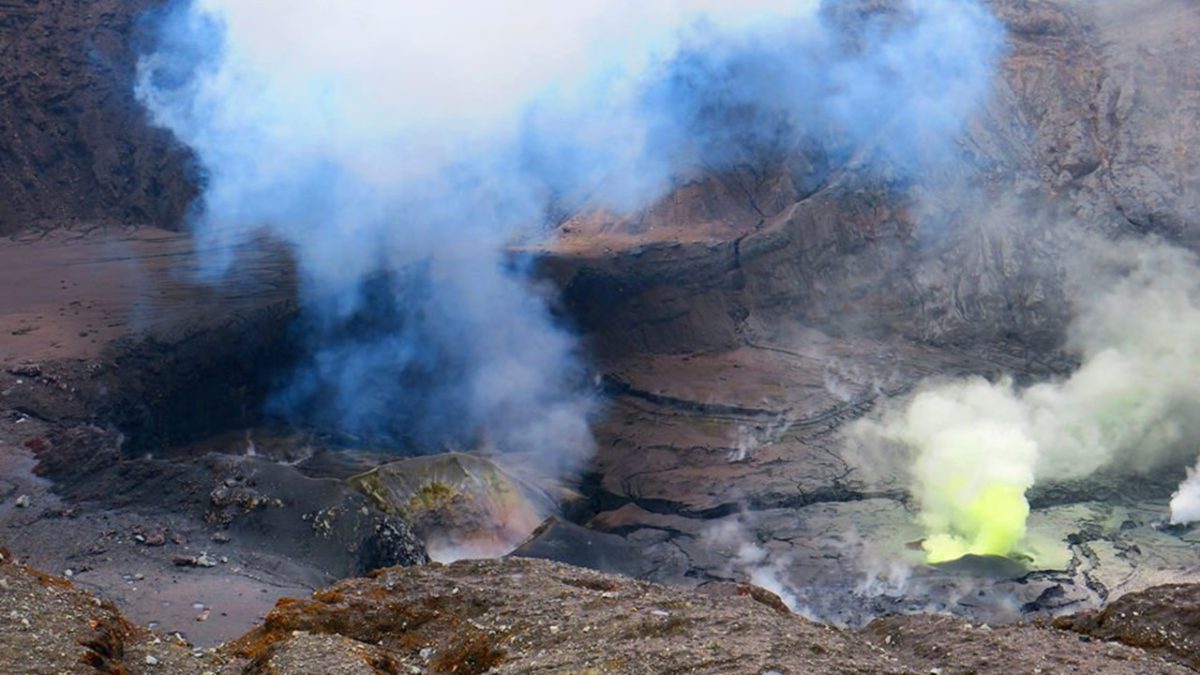
Y'all. This kind of thing is why we have robots. It's all fun and games until you cause the death of a grad student, something that happened in a lab at UCLA a few years ago. Astrobiology researchers (and I'm not just picking on Brian here, I'm wagging my mom-finger-of-disapproval at the entire field): don't make that mistake. But because everyone is still alive to tell their fieldwork tales, I enjoyed the session.
This is probably my last report from #LPSC2018, but there are still several guest blogs in the pipeline, so stay tuned!
The Time is Now.
As a Planetary Defender, you’re part of our mission to decrease the risk of Earth being hit by an asteroid or comet.
Donate Today

 Explore Worlds
Explore Worlds Find Life
Find Life Defend Earth
Defend Earth


